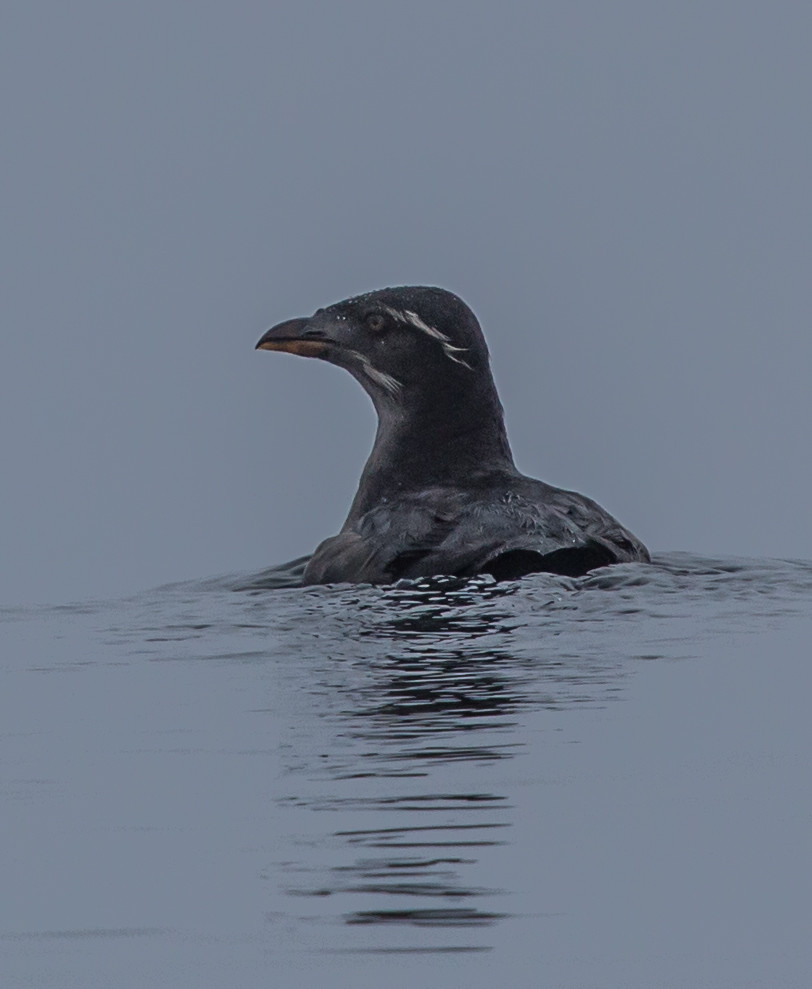Rhinoceros Auklet
| Cerorhinca monocerata | Order: Charadriiformes | Family: Alcidae (Auks, Murres, and Puffins) |
This bird, the only living member of its genus Cerorhinca, is most closely related to the Tufted Puffin and nicknamed the rhino auklet, horn-billed puffin, or unicorn puffin. It breeds from the Channel Islands to the Aleutians on the North American side of the Pacific, and on Hokkaidō and Honshū, Japan, and the Korean Peninsula and Sakhalin Island in Asia. Those that breed off California probably remain year-round; those breeding further north are more migratory, so after the northern breeding season, California waters can be filled with these birds which are often seen on late summer and fall pelagic boating trips and even from shore. I’ve seen them several times off the California coast, both on a boat trip from Santa Barbara to Santa Cruz Island and on Debi Shearwater pelagic trips, and on a boat trip in Kenai Fjords National Park in Alaska.
The bill of both sexes has fluorescent characteristics when viewed under ultraviolet light, varying among individuals of both sexes. This probably helps this highly sociable, monogamous species to recognize individuals and to select a mate. Both mandibles give off fluorescence, but the feature is most prominent in the horn.
Like puffins, the Rhinoceros Auklet produces a single egg in its nest in a burrow. This species holds a record in the Guinness Book of World Records:
Rhinoceros Auklet: Longest bird’s nest burrow. The longest nest burrows on record for any species of bird are those for the rhinoceros auklet (Cerorhinca monocerata), a puffin-related seabird. Nesting on small grass-covered islands in the North Pacific, its nesting burrows typically measure 2–3 m (6.5–10 ft) long, but examples twice this long are not unusual, and one exceptional burrow measured 8 m (26 ft).
